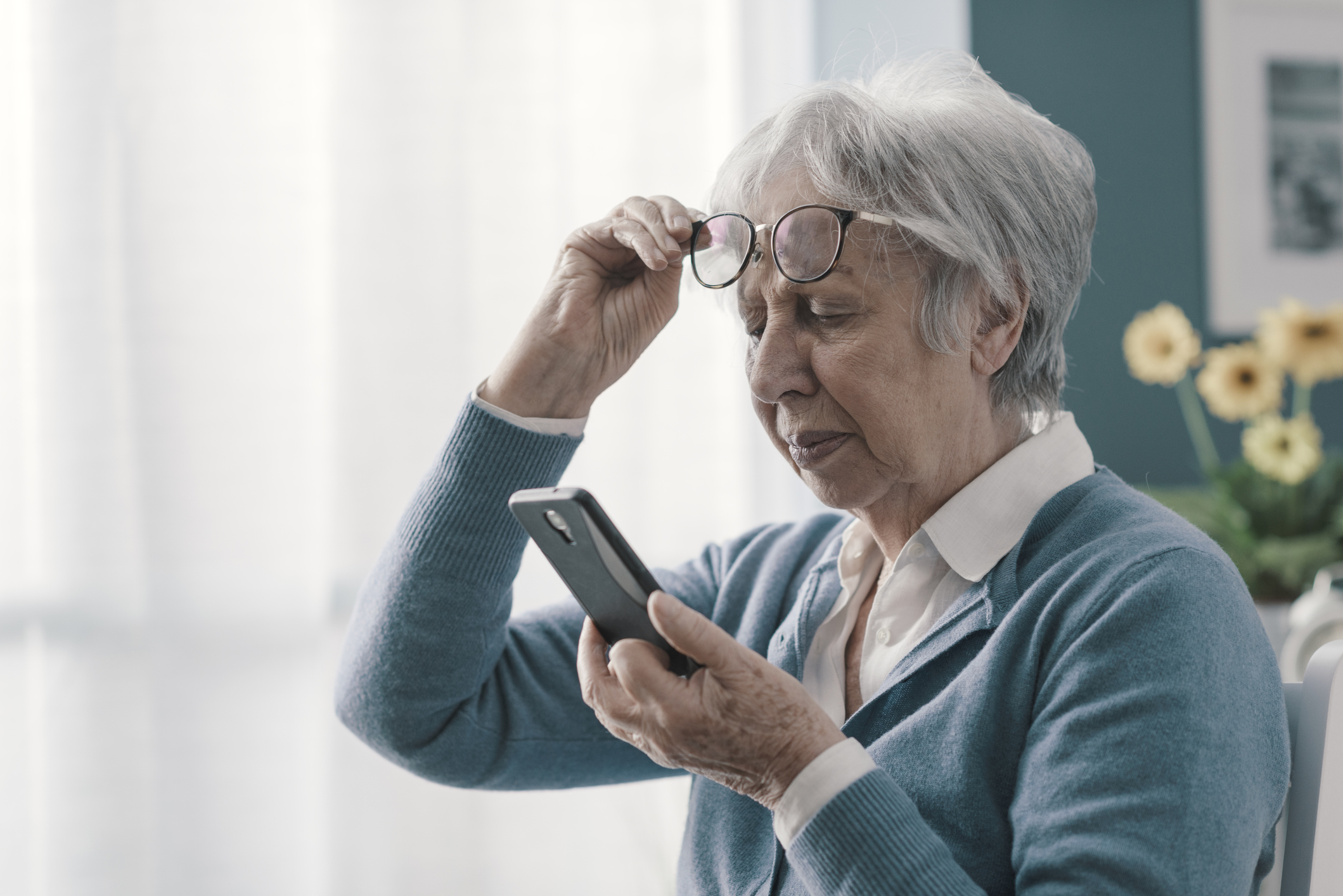As we grow older, our eyes naturally change and can develop certain vision problems. It’s essential to be aware of these age-related vision issues to take appropriate steps in maintaining good eye health. In this blog, we’ll discuss some common age-related vision problems, their causes, symptoms, and ways to manage them.
Contents
1. Presbyopia
Presbyopia is a common age-related vision problem that typically begins around the age of 40. It occurs when the eye’s lens loses its flexibility, making it difficult to focus on close objects.
Causes: The primary cause of presbyopia is the natural aging process. As we age, the proteins in the eye’s lens become less flexible, causing it to harden and lose its ability to change shape.
Symptoms: The main symptom of presbyopia is difficulty focusing on close objects. People with presbyopia often hold reading materials farther away from their eyes or need brighter light to see clearly.
Management: Presbyopia is usually corrected with reading glasses, bifocals, or progressive lenses. Regular eye exams are essential to ensure that you have the correct prescription for your glasses.
2. Cataracts
Cataracts are a clouding of the eye’s natural lens, which can lead to blurred or hazy vision. They are one of the most common age-related vision problems, affecting millions of people worldwide.
Causes: Cataracts develop primarily due to the aging process. Other factors, such as smoking, excessive exposure to sunlight, and certain medications, can also contribute to cataract formation.
Symptoms: Symptoms of cataracts include blurry or cloudy vision, difficulty seeing at night, increased sensitivity to glare, and seeing halos around lights.
Management: In the early stages, cataracts can be managed with prescription glasses or better lighting. When cataracts significantly affect the quality of life, surgery may be recommended to remove the cloudy lens and replace it with an artificial one.
3. Age-Related Macular Degeneration (AMD)

Age-related macular degeneration is a leading cause of vision loss in people over the age of 50. It affects the macula, the central part of the retina responsible for sharp, detailed vision.
Causes: The exact cause of AMD is not known. However, factors such as genetics, smoking, high blood pressure, and a poor diet can increase the risk of developing the condition.
Symptoms: Early symptoms of AMD include blurry or distorted central vision, difficulty recognizing faces, and needing brighter light for reading. As the condition progresses, it can lead to severe vision loss or even blindness.
Management: AMD has no cure, but certain treatments can slow its progression. These include vitamin supplements, laser therapy, and injections of medications into the eye. Regular eye exams are crucial in detecting AMD early and starting treatment as soon as possible.
4. Glaucoma
Glaucoma is a group of eye conditions that damage the optic nerve, which is responsible for transmitting visual information from the eye to the brain. If left untreated, glaucoma can lead to irreversible blindness.
Causes: Glaucoma is most often caused by increased intraocular pressure (IOP) within the eye. This pressure can damage the optic nerve over time. Other factors contributing to glaucoma development include age, family history, and certain medical conditions like diabetes.
Symptoms: In most cases, glaucoma develops slowly and without noticeable symptoms. Some people may experience peripheral vision loss, tunnel vision, or difficulty adjusting to low light.
Management: Glaucoma cannot be cured, but early detection and treatment can help slow its progression and prevent vision loss. Treatment options include prescription eye drops, oral medications, laser treatment, or surgery to reduce intraocular pressure.
5. Diabetic Retinopathy
Diabetic retinopathy is a complication of diabetes that affects the blood vessels in the retina, leading to vision problems and even blindness if left untreated.
Causes: Diabetic retinopathy is caused by high blood sugar levels, which can damage the blood vessels in the retina over time. Poorly controlled diabetes, high blood pressure, and high cholesterol can increase the risk of developing this condition.
Symptoms: Symptoms of diabetic retinopathy include blurry vision, floaters, dark spots in the visual field, and fluctuating vision. In severe cases, it can lead to retinal detachment and blindness.
Management: The best way to prevent diabetic retinopathy is to manage your diabetes effectively through regular blood sugar monitoring, a healthy diet, and exercise. If you already have diabetic retinopathy, treatments such as laser therapy, injections of medication into the eye, or surgery may be recommended to slow the progression of the disease and preserve your vision.
Conclusion
Age-related vision problems are common, but with regular eye exams and appropriate management, many of these conditions can be detected early and treated effectively. Taking care of your eyes as you age by eating a healthy diet, exercising regularly, and protecting your eyes from harmful UV rays is essential.
If you’re experiencing any changes in your vision or have concerns about your eye health, scheduling an appointment with your eye care professional is crucial. They can help identify any issues and recommend the best course of action to maintain your vision and overall eye health.

